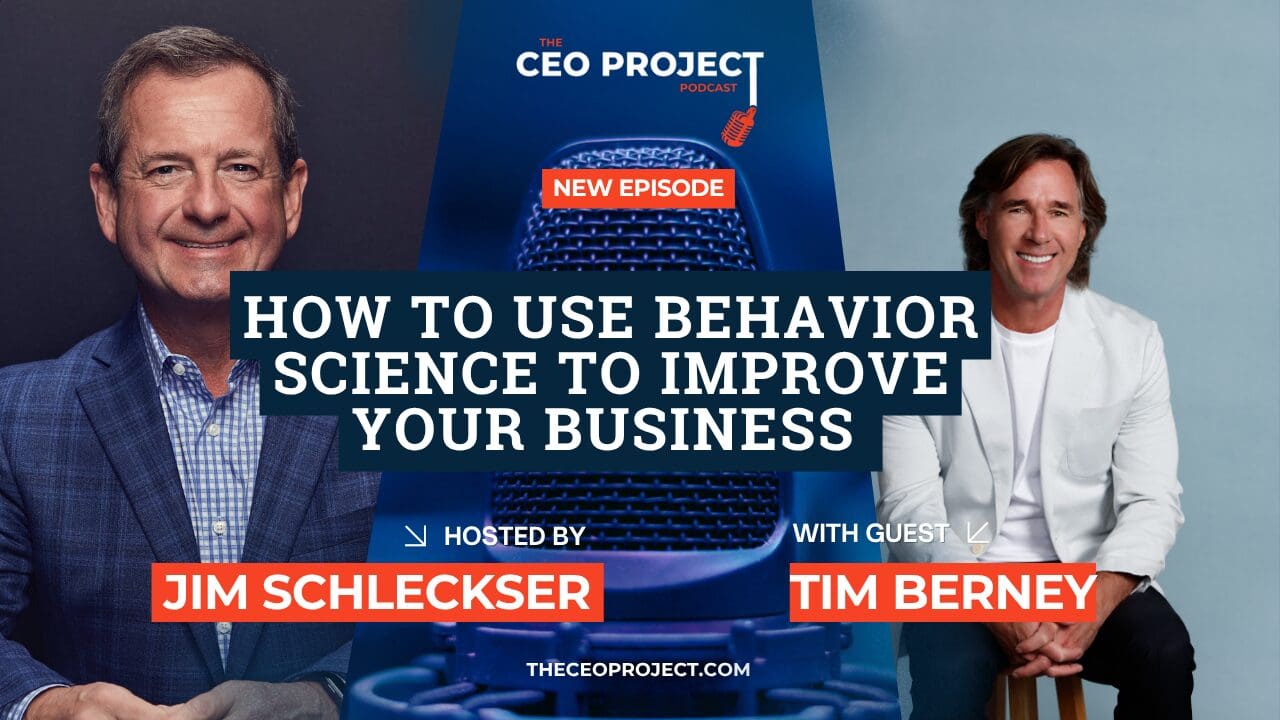What if behavioral science—not just branding—was the key to finally getting people to pay attention, change habits, and take action?
Whether you’re launching a product, driving cultural change, or working to influence public behavior, you’re up against deeply ingrained habits. In this episode, you’ll hear how expert Tim Berney uses behavioral science to create campaigns that do more than inform—they shift mindsets and drive real-world results. This approach works just as powerfully for CEOs as it does for public health leaders.
Here’s what you’ll walk away with:
-
A framework for using behavior science to guide people through awareness, belief shifts, and sustainable change.
-
Lessons from successful campaigns that moved entire communities—from recycling to water conservation to anti-smoking.
-
Insight into how these same tools apply to internal culture change and leadership development.
Listen now to discover how behavior-driven marketing can help you solve your toughest communication and culture challenges.
From Lawn Mowing to Leading a Behavior Change Agency
[02:31] – Early Entrepreneurial Roots
Tim Berney shares how his first job mowing lawns at age 10 sparked a lifelong curiosity about attracting customers—long before he knew the word “marketing.”
[07:45] – An Accidental Leap into Media Buying
A classified ad in 1989 led Tim to his first real marketing job, where he realized the power of messaging and strategy for small businesses—eventually acquiring the company and going all-in.
[13:20] – Building a Company from Scratch
Tim recalls launching VI Marketing with just one client and $1,300/month in revenue, waiting tables at night to make ends meet, and slowly scaling through grit, trust, and purpose.
[17:52] – Specialization Through Evolution
Originally focused on media and digital, VI Marketing evolved into a leading agency focused on behavioral science—helping clients shift societal norms, not just sell products.
[24:10] – The 4 Stages of Behavior Change
Tim outlines a core behavioral science model: 1) awareness, 2) attitude shift, 3) behavior change, and 4) normalization—using examples like seatbelt usage and recycling.
How Behavioral Science Drives Real-World and Cultural Change
[28:36] – Microtargeting for Macro Impact
Not everyone is at the same stage of change—Tim explains how behavioral science allows campaigns to segment audiences and tailor messages that meet people where they are.
[34:18] – Behavior Change at Work: Cultural Transformation
The same model used to reduce smoking or save water can be applied inside organizations. Leaders can drive internal cultural change by applying behavioral science principles.
[41:02] – Empathy Over Shaming
Tim emphasizes that behavioral change campaigns succeed when they’re empathetic, not preachy—especially when dealing with hardwired behaviors like smoking or overconsumption.
[47:22] – AI, Content, and the Changing Marketing Frontier
Digital platforms and AI tools are accelerating content needs. Tim explains how automation is helping agencies scale personalization without losing strategic focus.
[53:10] – Leadership, Legacy, and Long-Term Growth
The episode closes with a reflection on leadership, quoting Bill Gates: “Most people overestimate what they can do in a year and underestimate what they can do in 10.” A reminder that great leaders apply the same patience and strategy found in behavioral science.
About Our Guest
Tim Berney is the CEO and Founder of VI Marketing & Branding, a multi-million-dollar, independent agency known for creating behavior-changing campaigns that drive measurable success. With decades of experience in marketing and branding, Tim has led VI to become a nationally recognized firm, helping businesses scale through strategic innovation. His expertise spans brand development, market growth and leadership in an evolving digital landscape.









